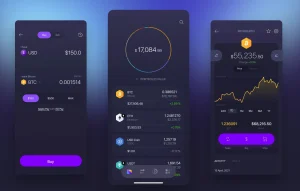
Let’s be honest—investing in low-cap altcoins is like hunting for hidden gems in a flea market. The potential upside? Massive. The risks? Oh, they’re there too. But with the right micro-investment strategies, you can tilt the odds in your favor without betting the farm.
Why Low-Cap Altcoins? The High-Risk, High-Reward Play
Low-cap altcoins—those with market valuations under $100 million—are the underdogs of crypto. They’re volatile, often overlooked, and sometimes… just plain weird. But here’s the thing: these coins can deliver returns that make Bitcoin’s growth look sluggish. The catch? You’ve got to be smart about how you play the game.
The Allure of Micro-Investing
Micro-investing means putting small amounts of money into multiple projects instead of going all-in on one. It’s like planting a dozen seeds instead of betting on a single sapling. Some will wither. Others might grow into redwoods.
Strategy #1: The “Drip-Feed” Approach
Instead of dumping a lump sum into a low-cap altcoin, spread your investment over weeks or months. This smooths out volatility and lets you average your buy-in price. Think of it as dollar-cost averaging—but for coins nobody’s heard of yet.
How to do it:
- Set a monthly budget (e.g., $50–$200).
- Divide it across 3–5 promising low-cap coins.
- Stick to the plan—even when FOMO hits.
Strategy #2: The “Niche Hunter”
Low-cap altcoins often thrive in specific niches—DeFi, gaming, privacy, you name it. Find a sector with momentum, then dig for projects with real utility. A coin solving a real problem in a growing niche? That’s your golden ticket.
Example niches in 2024:
- AI-driven blockchain protocols
- Decentralized physical infrastructure (DePIN)
- Privacy-focused Layer 2 solutions
Strategy #3: The “Community Whisperer”
With low-caps, community is everything. A passionate, engaged following can propel a coin from obscurity to the moon. Lurking in Telegram groups or Discord channels isn’t glamorous—but it’s where you’ll spot the next big thing before it’s… well, big.
Red flags vs. green flags:
| 🚩 Red Flags | ✅ Green Flags |
| Overhyped shilling | Technical discussions |
| Anonymous devs | Transparent team |
| Zero roadmap | Clear milestones |
Strategy #4: The “Liquidity Sleuth”
Low liquidity = high risk. If a coin’s trading volume is microscopic, you might struggle to sell when you want. Always check liquidity pools and exchange listings. A coin on just one shady exchange? Hard pass.
Tools to Check Liquidity
- DexScreener (for decentralized exchanges)
- CoinMarketCap or CoinGecko (for centralized exchanges)
- Uniswap/PancakeSwap analytics
Strategy #5: The “Exit Plan Realist”
Here’s the hard truth: most low-cap altcoins fail. That’s why you need an exit strategy before you invest. Decide in advance:
- Profit-taking targets (e.g., sell 25% at 2x, 25% at 5x)
- Stop-loss limits (e.g., -30% = cut losses)
- Time-based exits (e.g., reassess after 6 months)
And hey—if a coin moons? Take profits. Nobody ever went broke cashing out too early.
Final Thought: The Art of Playing the Long Game
Micro-investing in low-cap altcoins isn’t about getting rich overnight. It’s about patience, research, and—let’s face it—a little luck. The crypto market moves fast, but the smartest investors? They know when to slow down.







